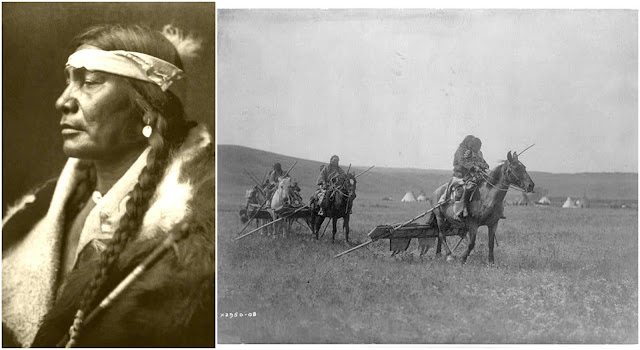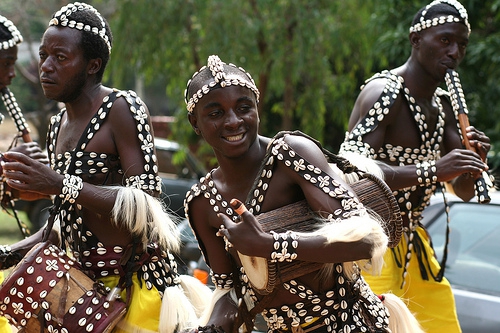 |
| Left photo - Assiniboin Boy, a Gros Ventre man, photo by Edward S. Curtis. Wikipedia/Public Domain, Right photo - Gros Ventre moving camp with travois. Wikipedia/Public Domain |
Idealized illustration of “Pine Leaf,” possibly identified with Woman Chief, from James Beckwourth’s autobiography.
After the death of her father, she gained the leadership of his lodge. She got the respect as a warrior after she proved her skills in a riot with the Blackfoots. Pine Leaf was also the most reliable in defending her people whenever there was a need for it. She would answer to any fight in order to protect her people. Also, she formed a group of warriors with whom she reportedly attacked the Blackfoot and stole their horses.
 |
| Six Blackfeet chiefs painted by Paul Kane along the South Saskatchewan River in Canada ( c.1851-1856). |
She made peace with the Gros Ventres party but after a few years, some of their people killed her.
She met with a number of Western explorers including Edwin Denig and Rudolph Kurz, and they were enchanted by her. All stories written about Pine Leaf praise her bravery, cleverness, and skills.
 |
| Crow Indians, c. 1878–1883. |
Most of the information the world has about her come from James Beckwourth who wrote about Pine Leaf – the Crow warrior. In his writings, he seems fascinated by her, which leaves the reader with the question if he used his fascination lead him to an imagination about the things he wrote. Beckwourth claimed that he met Pine Leaf while living with the Crow in the 1820s.
 |
| Left photo – James P. Beckwourth, circa 1860, in Denver, Kansas Territory. Right photo – Beckwourth as an Indian warrior, 1856. |
He also claimed to have had a romantic relationship with Pine Leaf, which is also not a very reliable fact.
There are a few other woman-warriors beside Pine Leaf, all from the Crow Nation. Two such are Akkeekaahuush and Biliíche Héeleelash who was a prominent war leader.
Other articles on the same theme:
Story source:
The above post is reprinted from materials provided by Thevintagenews . Note: Materials may be edited for content and length.






















